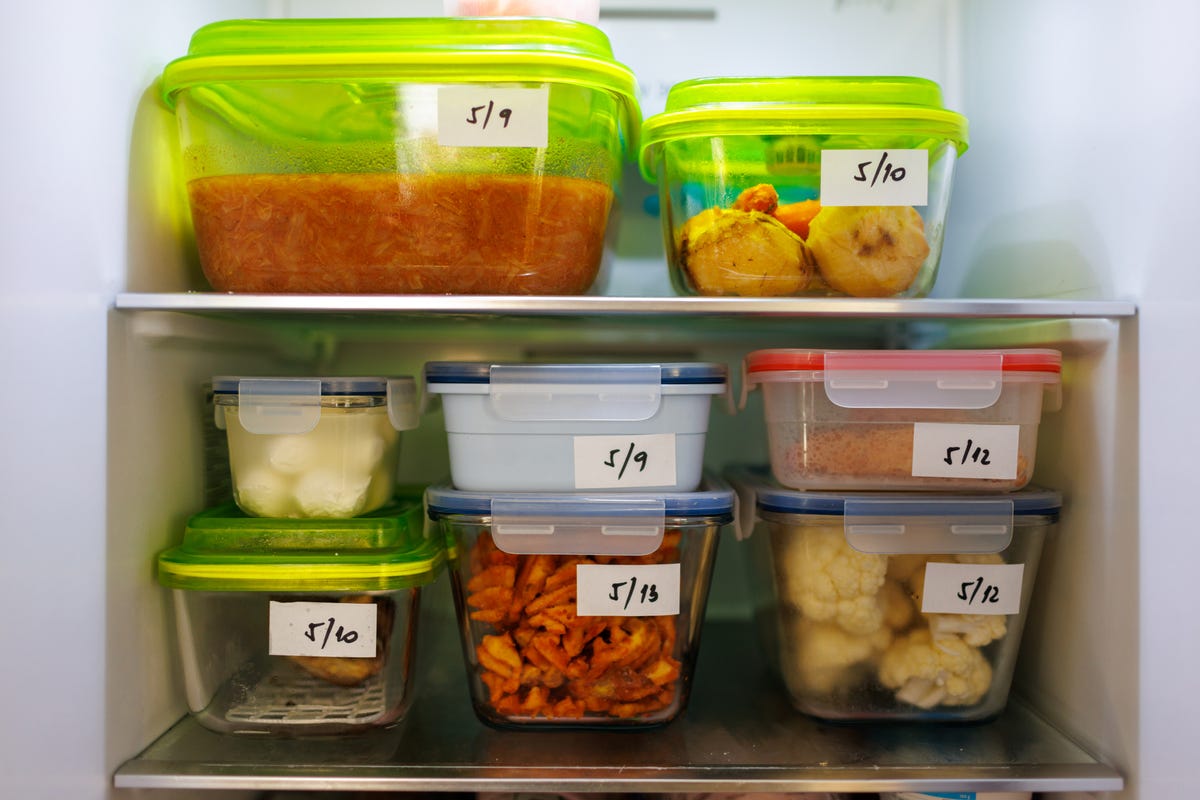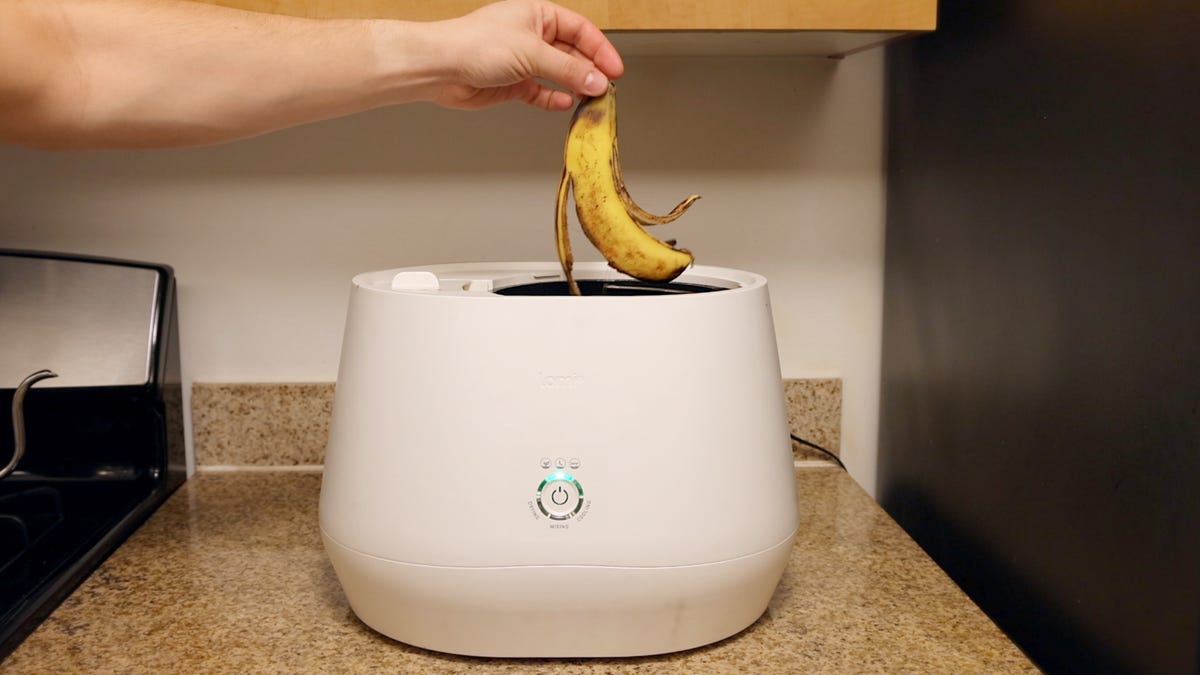If you want to cut down on food waste, do yourself and your food a favor by using your refrigerator to your advantage. If your fridge storage strategy is merely stashing new groceries wherever there’s room, this might not be doing your groceries any favors when it comes to their freshness and maximizing shelf life. According to Trevor Craig, food safety expert for Microbac Laboratories, the way you stock your fridge can have a big impact on the longevity of the food within it.
Understanding shelf life

Don’t assume a bygone expiration date means your food is spoiled.
Before we even get to the fridge, did you know that expiration dates aren’t regulated or mandated by the USDA? The dates printed on your packaged items are more a prediction of shelf life on behalf of manufacturers, rather than a guarantee of safety. “Shelf life isn’t a safety measurement. It’s a quality measurement of food for most products,” says Craig. “So that shelf life, whether it’s a couple of months or a couple of years, is actually based on how high quality they think their product is going to be over that period of time.”

That being said, food that is improperly stored might not stay in its ideal condition throughout whatever shelf life is predicted on the label. “By maintaining a good refrigeration or proper storage, you can make sure your products last that entire shelf life, because that shelf life is based on those storage conditions,” says Craig.
Food that is stored at improper temperatures is definitely going to degrade faster. And conversely, food that is stored correctly has a better chance of staying fresh beyond its “expiration” date. “If you’ve kept it under proper conditions, the food could still be good to eat,” says Craig. “You can extend it out a little bit further by maintaining it really well.”
Zone defense: Different sections have wildly different temps

The bottom back of your fridge will typically maintain the coldest temps.
First, it’s important to understand that not every spot in your refrigerator maintains the same temperature consistently. “With newer technology, you see fridges a little bit better at holding their temperature, but typically, the bottom of your fridge is where it’s kept coldest,” says Craig. Heat — even in a cold storage environment — rises. “The back of the fridge is where the cooling units typically are, so as you move forward, away from those cooling units, you see that being a little bit warmer.”
Since the bottom and back of your refrigerator is the zone that maintains the coldest temperature, this is the best place to store items that are especially prone to spoilage and that have comparatively short shelf lives, such as fresh dairy products and raw meats.
Top to bottom organization

Food storage containers are a fierce weapon in the fight against food spoilage.
Putting raw meat on the bottom of your refrigerator also prevents cross contamination. Craig recommends a top down approach as well when it comes to stocking your refrigerator for maximum quality and freshness. “Your fridge shelves are designed to help you protect your food,” he says. “The top of your fridge should be basically things that are ready to eat, and the bottom of your fridge should be more raw foods, because any of those raw things could possibly drip,” and easily contaminate your ready-to-eat items. “This is the one thing I would say that people do incorrectly all the time, and it grosses me out but probably should gross them out, too.”
Use your fridge’s designated drawers

Using the correct drawers will help keep food from drying out and spoling.
Your refrigerator probably has drawers designated for produce, or deli items, and they should be used accordingly. “You can control humidity and moisture within those drawers, and that keeps food a little bit crisp,” says Craig, especially for produce. It also prevents the kind of airflow that might be good for certain products, but can dry out things such as cheese and fresh vegetables.
While this may be obvious to some, especially if your fridge’s drawers have labels, those drawers should definitely not be used for all-purpose storage. “I would stay away from putting your meats in there, because it’s going to be really hard to keep that meat very cold,” says Craig. He also points out that the shelves of your fridge are slanted, which helps juices drain and prevents them from pooling, (another reason to store meats at the bottom), while the drawers of your fridge can trap leaked juices, which leads to possible bacterial contamination.
Consider storage containers

Air-tight food storage containers are one of your best defenses against food spoilage in the fridge.
You can look to TikTok for inspiration: There is value in using individual storage containers not only for ensuring food quality, but also in making it easy to clean your fridge way more often than you probably are.
“I put everything in a secondary container, so it’s not leaning against a wall,” says Craig. “And if anything bursts or explodes it’s captured within that secondary container.” Unplanned fermentation and accidental freezing are things that can cause food to burst out of its packaging in your refrigerator.
Back to school sales are great times to look into small, shoebox-size storage containers. You’ll prevent spillage of miscellaneous juices onto the shelves of your fridge, plus it’s much easier to wash individual storage containers in the dishwasher or sink than it is to empty everything out of the fridge for periodic cleaning.
Beware of the door, the warmest place in the fridge

The door is the warmest part of your fridge. Avoid storing foods there that spoil quickly.
The warmest area of your refrigerator is the door, since it experiences a wider fluctuation in temperature every time it is opened. (Depending on your eating or even decision-making habits, this can happen more often than just meal times.) “I put things in the door that maybe don’t really need to be refrigerated or are a little bit more tolerant,” says Craig. “Things that have really long shelf lives like jams and jellies and a lot of condiments, which is what most people put there.” If you already have that habit, good work. (My refrigerator door is home to no less than four different mustards, six different hot sauces and several bottles of wine.)
The refrigerator door may have specific components for things such as butter and eggs, which are fine to store there. Neither of those products demand as much refrigeration as we tend to give them in this country for proper freshness. However, components that seem designated for milk cartons should be repurposed for other items. “I wouldn’t store a lot of dairy in your door,” says Craig. You can use those compartments for things like juice that are pasteurized more heavily than milk and contain a lot of acid, and therefore won’t spoil as quickly.
Keep it stocked, but not overstocked

There is such a thing as an overstocked fridge, and it may be causing your food to spoil faster.
If you’ve ever stuffed your fridge within an inch of its life, you probably already know that this isn’t helping your refrigerator keep your food as fresh as possible. Before you go and throw everything out and start over, however, (especially since preventing food waste is the goal here) keeping it mostly empty doesn’t achieve optimal fridge performance either. “A full fridge does not maintain temperature very well, because it has to have some air circulation,” says Craig. “But it also has to have some items in there as an empty fridge does not maintain temperature very well.”
But according to Craig, your freezer, on the other hand, can handle being kind of stuffed: “Freezers maintain temperature better when they’re really full,” he says, but just mind that you can still close the door. “When you overfill a freezer, sometimes you’ll have problems with sealing and extra moisture. And that’s when you start to see a lot of frost.” If you need an ice chipper to remove your items, you’ll know you’ve gone too far.
Other ways to cut down on food waste

Food waste is a big problem: About half a trillion dollars of food is wasted annually, but there are plenty of ways to waste less and eat more.
This smart app we tried connects you to restaurants to buy food for cheap before they toss it. A better understanding of expiration dates can also prevent you from unnecessarily discarding items before they’re actually spoiled. If you do have spoiled food — and it happens — try starting a compost pile or using a smart at-home food recycler like this one or this one to keep organic waste out of the landfill.




















+ There are no comments
Add yours